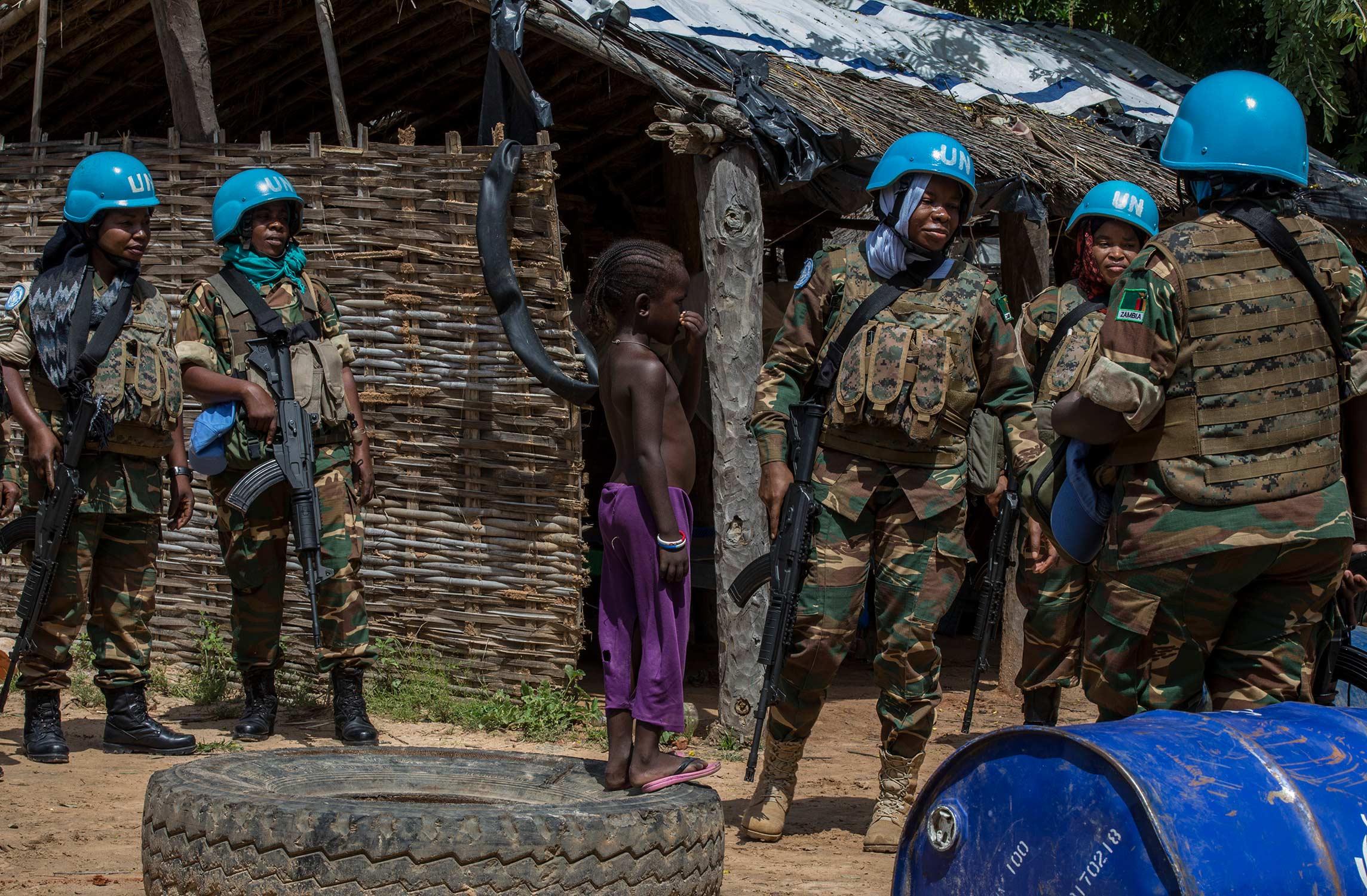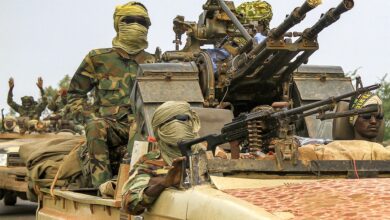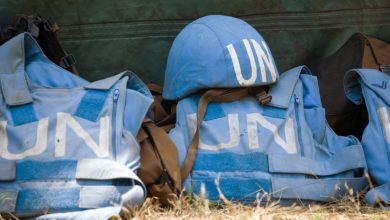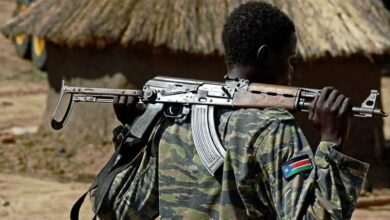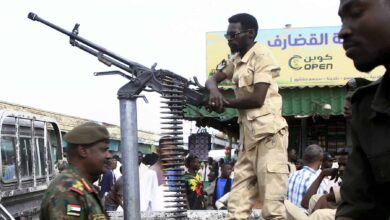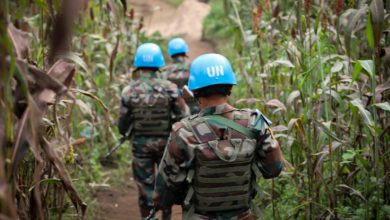Twelve members of an armed group were killed in clashes with United Nations peacekeepers and government troops in northeastern Central African Republic, the government said on Tuesday.
The fighting erupted on Sunday after the Popular Front for the Renaissance of Central Africa (FPRC) entered the flashpoint town of Birao from three directions before being repelled, government spokesperson Ange-Maxime Kazagui said in a statement.
“The toll is 12 dead on the FPRC’s side,” he said.
In a February 18 statement, the U.N. peacekeeping mission MINUSCA said blue helmets and CAR armed forces (FACA) had repelled “heavily armed” FPRC fighters who were threatening a FACA base, the U.N. base, and a site for internally displaced people.
“The FPRC approached the IDP camp and the MINUSCA base, we intervened in accordance with our mandate to protect civilians,” MINUSCA spokesperson Vladimir Monteiro said, Radio Ndeke Luka reported.
According to the report, the FPRC entered Birao at around 5 a.m. and clashes lasted around three hours. On unnamed source said there had been “several deaths” and “nearly 30 and wounded taken to hospital.”
FPRC spokesperson Aboubakar Siddick Ali in a Tuesday statement claimed its fighters “never attacked either the civilian population or movable and immovable property,” including humanitarian or U.N. installations. “No human, physical and material damage is to be credited to the FPRC,” he said, adding that the FPRC “only defends itself” against attacks from rival militias.
The statement called for MINUSCA to leave Birao, and that “an independent investigation be conducted into the situation” in the town.
The FPRC is one of the largest armed groups in the CAR, a land-locked impoverished country where militia groups control most of the territory, often fighting for control over resources.
Birao, in the northern Vakaga prefecture, is close to the borders with Sudan and Chad, and control of the town allows the armed groups to impose “taxes” on goods coming across the border.
The FPRC took control of Birao in 2014, but the Central African Liberators for Justice Movement (MLCJ), which is mainly drawn from the Kara ethnic group, is the dominant group in the town.
Violence erupted last July between the rival armed groups. Outbreaks of fighting remain frequent, and ethnic groups close to both reportedly have joined the fighting. Last September, at least 38 people were killed in fighting between the two armed groups in Birao.
Last Thursday, MINUSCA asked France to send warplanes over Birao. Two Mirage 2000D fighter jets were dispatched from N’Djamena in Chad, and carried out a “show of force” to dissuade the FPRC from mounting an attack, the French Armed Forces Ministry said in a release.
Also on Thursday, MINUSCA, the African Union and the Economic Community of Central African States (ECCAS) in a joint statement said the FPRC had “for weeks” been planning operations “to gain access to Birao by force of arms.”
The three condemned fighting that day near Birao between the FPRC and MLCJ, warning that the violence “constitutes a flagrant violation” of a peace agreement signed last year. RJDH reported that 15 people had died and around 40 others were injured in the fighting.
Both the FPRC and MLCJ were among 14 armed groups that reached a peace agreement with CAR’s government in February 2019. That led to the formation of a new government that includes representatives of the groups.
A divided country
Despite reserves of diamonds, gold, uranium, copper and iron, Central African Republic remains one of the world’s poorest countries.
Fighting broke out between the Seleka, a coalition of mainly Muslim rebel groups, and the mainly Christian anti-balaka militia in 2012. A peace deal was signed in January 2013, but Seleka rebels captured the capital Bangui that March and ousted President Francois Bozize.
The Seleka was officially disbanded within months, but many fighters refused to disarm, becoming known as ex-Seleka. Many others joined the anti-balaka militia to fight the Seleka, leading to a spiral of violence between groups along religious and ethnic lines.
By the end of 2014, CAR was de facto partitioned – anti-balaka in the southwest and ex-Seleka in the northeast.
Fighting has since forced nearly a quarter of the country’s 4.7 million people to flee their homes and rival militia groups control most of the country.
Elected in 2016, President Faustin-Archange Touadera’s weak government controls around a fifth of the country and relies heavily on the U.N. peacekeeping mission, MINUSCA, for support. The rest is controlled by at least 14 different militia groups who often fight each other for revenue from extortion, roadblocks or mineral resources.
The former French colony is bracing for presidential elections in December.
With reporting from AFP

